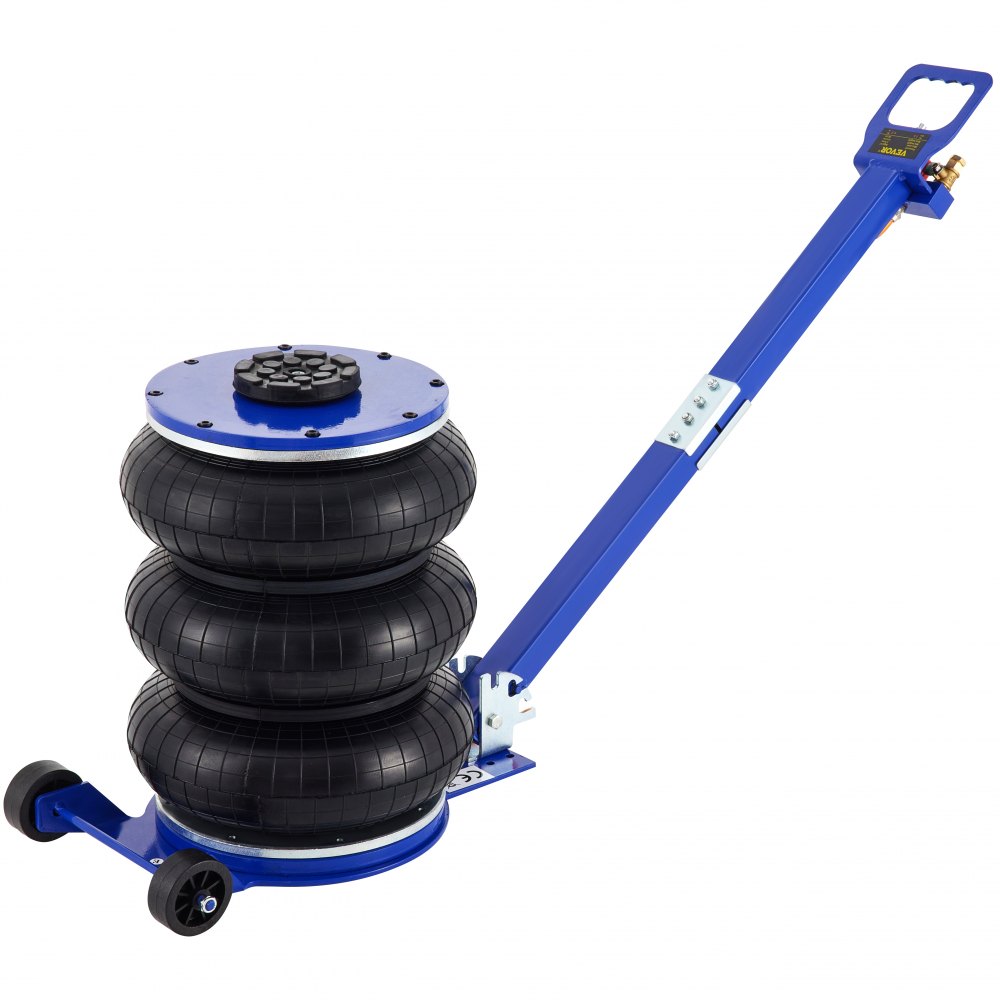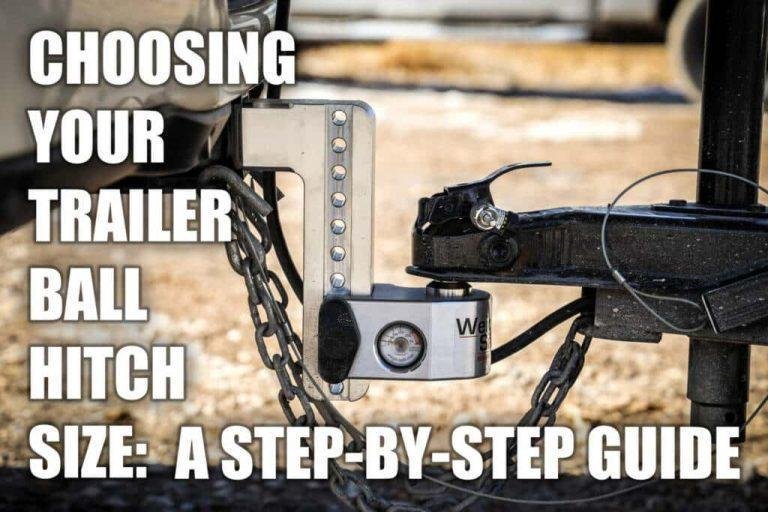A 2-ton jack can lift up to 4,000 pounds of weight. Jacks are a commonly used tool for lifting vehicles and heavy objects.
They are designed to provide stability and safety while lifting, making them an essential tool for many industries and home use. Whether you need to change a flat tire or perform maintenance on your car, a 2-ton jack can handle most lifting tasks.
With its lifting capacity, it is capable of lifting various vehicles, including sedans, suvs, and small trucks. Having a reliable and sturdy jack is crucial for ensuring successful and efficient lifting operations while keeping safety a top priority.

Credit: www.vevor.com
Understanding The Basics Of A 2 Ton Jack
A 2-ton jack is a versatile tool that can lift up to 4,000 pounds, making it ideal for lifting and supporting heavy vehicles. It’s important to understand the weight capacity of the jack to ensure safety and proper usage.
When it comes to lifting heavy objects, having the right tools can make all the difference. A 2 ton jack is a common tool used in various industries, including automotive repair and construction. In this section, we’ll dive into the explanation of what a 2 ton jack is, the components and structure of a typical 2 ton jack, and how jacks work to lift heavy objects.
Explanation Of What A 2 Ton Jack Is:
- A 2 ton jack has a lifting capacity of 2 tons, which is equivalent to 4,000 pounds.
- It is designed to provide mechanical advantage, enabling users to lift heavy objects with ease.
- The jack utilizes hydraulic power to lift the load, making it a reliable and efficient tool.
Components And Structure Of A Typical 2 Ton Jack:
- Cylinder: The cylinder acts as a container for hydraulic fluid and is responsible for creating the lifting force.
- Pumping system: It consists of a handle, piston, and release valve. Users operate the handle to pump the hydraulic fluid into the cylinder, which in turn raises the load.
- Base plate: The base plate provides stability and support for the jack.
- Lifting arm: The lifting arm is connected to the piston and extends outward to reach the load.
- Wheels: Some 2 ton jacks are equipped with wheels for easy maneuverability.
How Jacks Work To Lift Heavy Objects:
- The user places the base plate of the jack beneath the load, ensuring that it is positioned securely.
- By operating the handle, hydraulic fluid is pumped into the cylinder, causing the piston to rise.
- As the piston rises, the lifting arm is extended upwards, subsequently lifting the load.
- To lower the load, the release valve is activated, allowing the hydraulic fluid to flow back into the reservoir, and the piston gradually descends.
- Jacks work based on the principles of pascal’s law, where pressure applied to a fluid is transmitted equally in all directions. This allows for lifting heavy objects efficiently and safely.
Understanding the basics of a 2 ton jack is essential for anyone working with heavy loads. Whether you’re a professional mechanic or a diy enthusiast, having a solid grasp of how jacks function can significantly contribute to your productivity and safety.
So, let’s now explore the different types of jacks and their applications in the industry.
Determining The Weight Capacity Of A 2 Ton Jack
A 2-ton jack is capable of lifting weights up to 4,000 pounds, making it a reliable tool for various tasks. It offers a sturdy and safe solution for lifting heavy vehicles or equipment, ensuring efficient and secure maintenance or repairs.
When it comes to lifting heavy weights, a reliable and sturdy jack is an essential tool. If you’ve ever wondered how much weight a 2 ton jack can lift, you’re in the right place. In this section, we’ll explore the factors that affect the lifting capacity of a 2 ton jack and how weight capacity is indicated.
It’s important to understand these aspects to ensure safe and successful lifting operations.
Factors That Affect The Lifting Capacity Of A Jack:
- Material and construction quality: The durability and strength of the materials used in the jack’s construction play a crucial role in determining its weight capacity. Higher-quality materials can handle heavier loads and offer enhanced stability.
- Hydraulic or mechanical operation: The mechanism used to lift the weight also impacts the jack’s capacity. Hydraulic jacks utilize pressurized fluid to raise the load, providing a higher weight capacity compared to mechanical jacks that rely on gears and levers.
- Lift height and stability: The height to which the jack can extend affects its lifting capacity. Higher lifts might have reduced weight limits due to stability concerns. It’s important to consider the lift height required for your specific needs.
- Safety features and load ratings: Different jacks come with various safety features and load ratings. The load rating indicates the maximum weight that the jack can safely lift. Be sure to check the load rating of the jack and adhere to it for safe operation.
How Weight Capacity Is Indicated On A 2 Ton Jack:
- Load rating designation: Manufacturers typically indicate the weight capacity of a jack directly on the product. Look for the load rating label or marking, usually expressed in tonnage. In the case of a 2 ton jack, it is designed to lift loads weighing up to 4,000 pounds.
Importance Of Following Weight Capacity Guidelines:
Following weight capacity guidelines is of utmost importance for several reasons:
- Safety: Exceeding the weight capacity of a jack can lead to catastrophic failures, causing injury or damage. Keeping within the specified limit ensures the safety of both the operator and the load being lifted.
- Optimal performance: Utilizing the jack within its weight capacity allows it to function optimally, ensuring smooth and efficient lifting operations.
- Longevity: Overloading a jack can lead to premature wear and tear, negatively impacting its lifespan. Adhering to weight capacity guidelines increases the longevity of the jack and reduces the need for frequent replacements.
Now that you understand the factors affecting the lifting capacity of a 2 ton jack and how weight capacity is indicated, you can confidently select and operate a jack that is suitable for your lifting needs. Remember to always prioritize safety and follow the manufacturer’s weight capacity guidelines for a successful lifting experience.
The Maximum Weight A 2 Ton Jack Can Lift
A 2-ton jack is capable of lifting a maximum weight of 4,000 pounds.
When it comes to lifting heavy objects or vehicles, having the right equipment is essential. A 2 ton jack is a popular choice for many diy enthusiasts and mechanics due to its versatility and capacity. In this section, we will discuss how the weight capacity of a 2 ton jack is determined, operational limits and considerations for using it, and the actual maximum weight it can lift.
Clear Explanation Of How The Weight Capacity Is Determined:
- The weight capacity of a jack is determined by the strength and design of its components.
- A 2 ton (4,000 lbs) jack is built to support a maximum load of 2 tons, or 4,000 pounds.
- The hydraulic system within the jack allows for the weight to be evenly distributed and safely lifted.
Operational Limits And Considerations For Using A 2 Ton Jack:
- It is important to carefully read and understand the manufacturer’s instructions and warnings before using a 2 ton jack.
- Always ensure that the weight being lifted does not exceed the jack’s maximum capacity of 2 tons.
- Be cautious of the stability of the surface where the jack is placed to prevent accidents or the jack sinking into soft ground.
- Regularly inspect the jack for signs of damage or wear to ensure safe and efficient operation.
- Remember to position the jack in the proper lifting points of the object or vehicle to avoid damage.
Discussion On The Actual Maximum Weight A 2 Ton Jack Can Lift:
- A 2 ton jack can lift a maximum weight of 4,000 pounds (2 tons) when used within its operational limits.
- This weight capacity makes it suitable for lifting a variety of objects and vehicles, including:
- Sedans and smaller cars: Most sedans and compact cars fall well within the 2 ton lifting capacity.
- Suvs and light trucks: Many suvs and light trucks also fall within this weight range.
- Motorcycles: A 2 ton jack can easily lift most motorcycles, allowing for maintenance and repairs.
- Small boats and trailers: The lifting capacity is often sufficient for raising smaller boats or trailers for maintenance purposes.
A 2 ton jack is a reliable and versatile tool with a maximum lifting capacity of 4,000 pounds. It is crucial to follow the operational limits and safety considerations outlined by the manufacturer to ensure safe and efficient lifting. When used correctly, a 2 ton jack can handle various common objects and vehicles that fall within its weight capacity, making it an indispensable piece of equipment for many diy enthusiasts and mechanics.
Safety Precautions And Best Practices
A 2-ton jack can lift up to 4,000 pounds, making it suitable for most automobiles and light trucks. However, it is crucial to adhere to safety precautions and best practices to prevent accidents and ensure a smooth lifting process.
It is crucial to prioritize safety when using a 2 ton jack to lift heavy objects. By following recommended safety guidelines and best practices, you can ensure that the lifting process is carried out correctly and without any accidents. In this section, we will discuss the importance of using the jack correctly and safely, recommended safety guidelines for using a 2 ton jack, inspecting the jack for any defects or malfunctions, and proper positioning and leveling when lifting heavy objects.
Importance Of Using The Jack Correctly And Safely:
- Proper use of the jack is essential to prevent accidents and injuries.
- Incorrectly using a jack can cause the load to shift or the jack to fail, leading to potentially dangerous situations.
- Following the manufacturer’s instructions is the first step in ensuring proper and safe use.
- Use the appropriate jack for the weight of the object being lifted to avoid overloading the jack’s capacity.
Recommended Safety Guidelines For Using A 2 Ton Jack:
- Always work on a flat, stable surface to ensure the stability of the jack and the load.
- Ensure that the load is balanced and secure before lifting, using additional support if necessary.
- Place wheel chocks or blocks on the wheels of the vehicle to prevent any accidental movement.
- Use jack stands as an additional safety measure to support the load once it is lifted.
- Never exceed the weight capacity of the jack. Check the weight rating before attempting to lift any object.
- Avoid positioning body parts under the load or between the load and the jack to minimize the risk of injury.
- Do not use the jack as a substitute for a jack stand or any other type of support stand.
Inspecting The Jack For Any Defects Or Malfunctions:
- Before using the jack, inspect it for any visible damage, cracks, or leaks.
- Check the hydraulic fluid level and ensure that it is in good condition.
- Test the operation of the jack to ensure it is working properly before placing any load on it.
- If you notice any defects or malfunctions, do not use the jack and have it repaired or replaced.
Proper Positioning And Leveling When Lifting Heavy Objects:
- Position the jack under the designated lifting point on the object.
- Ensure that the jack pad is directly underneath the lifting point to prevent any slipping or misalignment.
- Make sure the object is level and stable before lifting, using blocks or shims if necessary.
- Use the jack’s handle to slowly pump and raise the load, checking for any signs of instability.
- If needed, adjust the position of the jack to maintain balance and stability throughout the lifting process.
Remember, adhering to these safety precautions and best practices will not only protect you and others from accidents but also prolong the lifespan of your 2 ton jack. By prioritizing safety, you can maintain a secure and efficient lifting experience.
Alternatives And Upgrading Options
The 2-ton jack has a lifting capacity of 4,000 pounds, making it suitable for small to medium-sized vehicles. If you need to lift heavier vehicles or equipment, upgrading to a higher capacity jack is the recommended alternative.
When A 2 Ton Jack May Not Be Sufficient For Lifting Needs
- When working with heavy-duty vehicles or equipment, a 2 ton jack may not be powerful enough to handle the load. Here are some situations where a higher capacity jack might be necessary:
- Heavy-duty trucks: If you frequently work on large trucks or commercial vehicles, such as delivery trucks or buses, a 2 ton jack may not have the lifting capacity required. These vehicles often exceed the weight limit of a 2 ton jack, making a higher capacity jack essential.
- Suvs and vans: Certain suvs and vans can be quite heavy, especially when loaded with cargo or passengers. If you own or work with these types of vehicles regularly, you might need a jack with greater lifting capabilities to ensure safe and efficient maintenance or repairs.
- Construction equipment: Construction machinery, such as bulldozers, excavators, or loaders, can weigh several tons. Using a 2 ton jack to lift these heavy pieces of equipment would be unsafe and ineffective. A heavier-duty jack is necessary to handle their weight.
Overview Of Higher Capacity Jacks Available In The Market
- If you find yourself in need of a higher capacity jack, there are several options available to meet your lifting requirements. Here are some common higher capacity jacks in the market:
- 3 ton jack: This is a popular choice for those who need a slight upgrade from a 2 ton jack. A 3 ton jack offers increased lifting capacity without being too bulky or expensive.
- 4 ton jack: Stepping up to a 4 ton jack provides even greater lifting power, making it suitable for heavier vehicles and equipment. It can handle most cars, suvs, and even some light-duty trucks.
- 6 ton jack: For heavy-duty applications, a 6 ton jack is an excellent choice. This robust jack is designed for industrial use and can handle larger vehicles, such as full-sized trucks or heavy suvs.
Considerations For Upgrading To A Higher Capacity Jack
- When considering upgrading to a higher capacity jack, there are several factors to keep in mind to ensure you make the right choice:
- Weight requirements: Evaluate the weight of the vehicles or equipment you typically work with. Determine the maximum weight capacity you might encounter and select a jack that can comfortably handle that load.
- Storage and portability: Consider the available storage space and whether you need to transport the jack frequently. Higher capacity jacks are generally larger and heavier, so make sure you have adequate room and can easily move them if necessary.
- Durability and build quality: Look for jacks made from sturdy materials to ensure they can withstand heavy loads. Read reviews and choose a reputable brand known for manufacturing reliable and long-lasting jacks.
Pros And Cons Of Upgrading To A Larger Lifting Capacity
- Upgrading to a higher capacity jack comes with its own set of advantages and disadvantages. Here are some points to consider:
Pros:
- Increased lifting capacity: A higher capacity jack allows you to lift heavier vehicles and equipment, providing versatility and expanding your capabilities.
- Enhanced safety: Using a jack that matches the weight requirements ensures a more secure and stable lifting process, reducing the risk of accidents or damage.
- Efficiency: With a jack that can handle heavier loads, you can complete maintenance or repairs more efficiently, saving time and effort.
Cons:
- Cost: Higher capacity jacks generally come at a higher price point compared to their lower capacity counterparts. Consider your budget and weigh the cost against the benefits it offers.
- Size and weight: Upgrading to a larger jack means dealing with a bulkier and heavier piece of equipment. Ensure you have space and the means to handle the increased size and weight.
Remember, when deciding whether to upgrade your jack’s lifting capacity, always prioritize safety and consider the specific needs of your working environment.
Frequently Asked Questions For How Much Weight Can A 2 Ton Jack Lift?
Will A 2 Ton Jack Lift A Full Size Truck?
Yes, a 2-ton jack can lift a full-size truck.
What Is The Weight Limit For A 2 Ton Jack Stand?
A 2-ton jack stand has a weight limit of 4,000 pounds. It is important to choose a jack stand with the appropriate weight capacity to ensure safe and secure lifting of vehicles or objects. By following the weight limit guidelines, you can avoid accidents and potential damage to your equipment.
Remember to always check the weight capacity before using a jack stand and never exceed its limit.
Will A 2 Ton Bottle Jack Lift A Car?
Yes, a 2 ton bottle jack is capable of lifting a car.
Can A 2 Ton Jack Lift A Chevy 1500?
Yes, a 2 ton jack can lift a chevy 1500.
Conclusion
To sum up, a 2-ton jack can lift a weight of approximately 4,000 pounds, which makes it a reliable tool for various tasks. Whether you are changing a flat tire, conducting routine maintenance on your vehicle, or working on diy projects, this jack provides the necessary lifting power for most vehicles.
However, it’s important to remember that safety should always be the priority when using a jack. Make sure to check the weight limits specified by the manufacturer and use the jack on a stable and level surface. Regularly inspect the jack for any signs of wear or damage, and always follow proper lifting and positioning procedures.
By doing so, you can ensure a safe and successful lifting experience. So, whether you’re a mechanic or a car owner, having a 2-ton jack handy can save you time, money, and headaches in the long run.






